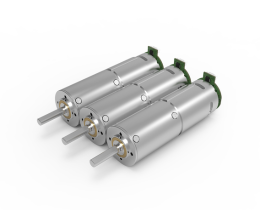The Quiet Revolution: How Small Gear Reduction Motors Are Changing the Game
Let’s talk about something that’s everywhere but rarely gets the spotlight: small gear reduction electric motors. You’ve probably seen them in action without even realizing it—whirring inside automated doors, powering conveyor belts, or even driving the precision movements of medical devices. These little workhorses are the unsung heroes of modern machinery. But what makes them so special? And why should you care?
.webp)
First off, imagine a motor that’s compact enough to fit in your palm but robust enough to handle heavy lifting. That’s the magic of gear reduction. By slowing down rotational speed while boosting torque, these motors turn “weak” energy into raw, controlled power. Think of it like a cyclist shifting gears uphill—less speed, more muscle. For industries where space and efficiency collide, this isn’t just useful; it’s revolutionary.
Why do these motors matter?
Glad you asked. Let’s cut to a real-world scenario: A factory needs to automate a packaging line. Speed is critical, but so is precision. A standard motor might spin too fast, causing misalignments or jams. A gear reduction motor steps in, delivering the exact balance of force and control. No drama, no wasted energy—just smooth, repeatable motion. It’s like swapping a sledgehammer for a scalpel.
But here’s the kicker: Not all gear motors are created equal. Ever heard one that sounds like a coffee grinder on overdrive? Cheap designs often skimp on materials, leading to noise, heat, and premature wear. KPOWER’s motors, though? They’re built with heat-treated alloy steel gears and precision-machined housings. The result? A whisper-quiet operation that outlasts competitors. One client clocked 10,000 hours on a single unit—no breakdowns, no fuss.
What makes them tick?
It’s all about the marriage of design and durability. Take the helical gears in KPOWER’s lineup. Unlike straight-cut gears that clatter and clash, helical teeth engage gradually, reducing vibration. Less vibration means less wear, lower noise, and happier machines. Add in sealed bearings and corrosion-resistant coatings, and you’ve got a motor that laughs at dust, humidity, and heavy cycles.
Still, specs alone don’t tell the whole story. Let’s get practical. A robotics startup once struggled with arm movements that were either too jerky or too sluggish. Swapping to a KPOWER gear motor gave them the fluidity they needed—cutting cycle times by 15%. Or consider solar tracking systems: These motors adjust panel angles with such subtlety that energy output jumps by 20%. It’s not just engineering; it’s artistry.
The bottom line?
Small gear reduction motors aren’t just components—they’re enablers. They let engineers dream bigger, build smarter, and push limits without blowing budgets. And while KPOWER doesn’t shout about it (we’re too busy testing prototypes), our motors have quietly become the go-to for industries where reliability isn’t negotiable.
So next time you see a machine working flawlessly, remember: There’s a good chance a tiny, unassuming motor is doing the heavy lifting. And if that motor happens to be a KPOWER? Well, let’s just say you’re witnessing the future—one quiet revolution at a time.
Fun fact: The average car has over 50 electric motors. How many gear-reduced ones could be optimizing your world right now?


































.webp)

